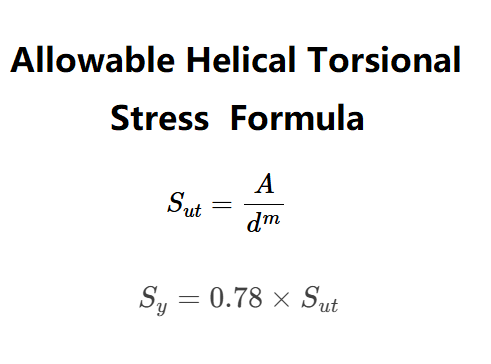 Home
Home
 Back
Back

Definition: Tensile strength (Sut) is the maximum stress that a material can withstand while being stretched or pulled before breaking.
Purpose: It is used to determine the load-bearing capacity of spring steel.
The tensile strength is calculated using the formula:
Variables:
The allowable stress \( S_y \) is calculated as:
Explanation: The factor of 0.78 is used to account for safety and material variability in cold-drawn carbon steel.
Tips: Select the material and enter the wire diameter. Click "Calculate" to get the tensile strength and allowable stress.
Q1: What is the significance of the material constants (A and m)?
A: The constants \( A \) and \( m \) are specific to the material and are used to calculate the tensile strength based on the wire diameter.
Q2: Can I use this calculator for other materials?
A: No, this calculator is designed specifically for the materials listed in the ASTM standards.
Q3: Why is the allowable stress calculated as 78% of the tensile strength?
A: The factor of 0.78 is used to account for safety and material variability in cold-drawn carbon steel.
Q4: What happens if I input zero for the diameter?
A: The calculator requires a positive diameter value. If zero is entered, the calculation will not proceed.
Q5: How accurate is this calculator?
A: The calculator provides accurate results based on the ASTM standards and input values. However, real-world conditions may introduce additional factors not accounted for here.